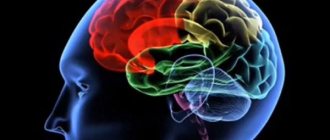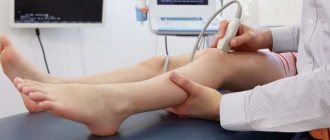Review
Ideal diagnosis: donate blood for tumor markers, and after a few days the result is ready - no cancer!
By visiting the laboratory every year, you can be confident in your health. Even if one day you become one of the cancer patients, you will find out about it at a very early stage, when the tumor cannot yet be touched, seen or felt, but can be easily cured completely. Don't believe it! It's too good to be true! Among the services of large medical laboratories, you will indeed find a blood test for tumor markers for diagnosing cancer: breast - CA 15-3, ovarian - CA 125, stomach - CA 72-4, lung - Cyfra 21-1, prostate - PSA, liver - alfa-Fetoprotein, etc. These are proteins or protein-carbohydrate complexes, the main source of which is a cancerous tumor, therefore the active growth of a malignant neoplasm and an increase in the concentration of tumor markers in the blood are closely related.
Thermoneurosis, what is it?
Thermoneurosis is a pathological condition in which the temperature remains at 37-38 degrees for a long period of time, and other manifestations of the disease may also be observed.
Today, thermoneurosis is considered to be a type of vegetative-vascular dystonia or neuroses, the distinctive feature of which is a sharp increase in human body temperature caused by neurological disorders.
The thermoregulation center, which is located in the hypothalamus, the most important part of the brain, is responsible for maintaining temperature in the human body.
An increase or decrease in air temperature, infection in the body, hypothermia , all this causes sudden changes in body temperature, which are strictly regulated by the hypothalamus.
An increase in body temperature in the event of an infection helps the body cope with the disease as soon as possible, but with thermoneurosis this mechanism fails.
A change in the central nervous system, a spasm of blood vessels causes an increase in body temperature to 38 degrees , but this is quite enough to make a person feel unwell.
This “disease” does not have an ICD-10 code, and foreign doctors have never heard of this disease.
Why are tumor markers wrong?
either almost everything will spill through the bars, or too much foreign debris will remain in the sieve. Tests that detect cancer markers have relatively low sensitivity and specificity. The number of people receiving erroneous test results exceeds the number of actual patients, since cancer is a rare disease.
Specificity is the ratio of the number of negative tests for a tumor marker in truly healthy people to the total number of people without cancer who took the test. Some of them will test positive, although there is no cancer.
Sensitivity is the ratio of the number of people with cancer identified by the test to the total number of cancer patients participating in the test. The higher the sensitivity, the fewer people with cancer will receive a false negative test result.
The incidence of ovarian cancer in women over 50 years of age is 40 cases per 100,000 people. Let's assume that some tumor marker for ovarian cancer has a very high specificity - 99%. Then, when examining 100,000 people, 1,000 of them will receive false positive results. The number of errors will be 25 times greater than the number of truly sick people.
The second indicator is the sensitivity of the test depends on the size of the tumor and its activity. In the early stages of cancer, tumor markers often remain within normal limits, and only when the tumor gains mass does the sensitivity of the tests increase. It turns out that the test is unsuitable for early diagnosis. For example, the tumor marker SCC is elevated only in half of patients with stage I endometrial cancer.
The third problem with existing cancer tests is that they poorly determine the location of the tumor. For example, cancer antigen 125 (CA 125) may be elevated in ovarian, uterine, breast, pancreatic, liver, colon, stomach, and lung cancers. Approximately the same range with other tumor markers.
The fourth drawback is that tumor markers increase not only in oncology. Tests are positive for benign diseases (cysts, polyps, fibroids, adenomas, etc.), inflammatory processes, infections, after injuries and operations, high levels of cholesterol in the blood and other various conditions.
The level of some indicators fluctuates throughout the day. For example, the concentration of the SCC marker in the same person can vary by 24% throughout the day. To correctly interpret the results, you need to do the test several times at the same time. In addition, there are several methods for determining each tumor marker, and by donating blood in different laboratories, you can get positive and negative results for cancer at the same time.
https://www.youtube.com/watch?v=ytaboutru
Here we could put an end to the topic of tumor markers, but these tests play a very important role in clinical oncology and really save lives. The main thing is to use them for their intended purpose.
Most often, tumor markers are used to monitor the effectiveness of treatment for an already detected tumor. If after surgery, chemotherapy or radiation the concentration of the tumor marker decreases, it is concluded that the treatment was successful. Sometimes the doctor recommends taking tumor markers at certain intervals. If their concentration begins to increase compared to the original, even remaining within normal limits, there is a possibility of tumor regrowth or metastases.
There are about 20 cancer markers that doctors use in difficult diagnostic cases: when there are suspicious symptoms or when it is necessary to determine the “evil” or “good” nature of a hard-to-reach tumor. However, these tests are prescribed only if the possibilities for more reliable cancer diagnosis have been exhausted.
Tumor markers are sometimes used for screening, but only among people at high risk of cancer. For example, the CA 125 tumor marker is used for the primary diagnosis of ovarian cancer in women at risk: those who have a genetic predisposition. In this case, a CA 125 test is prescribed annually in combination with ultrasound and monitored over time.
A serious problem in oncology is intestinal cancer - this is one of the most common types of malignant neoplasms, the early stages of which are asymptomatic. There is a great temptation to use tumor markers for early diagnosis of this disease. However, all existing tumor markers for colon cancer give an unacceptably high number of false-positive results.
They are used only to monitor treatment, monitor patients in remission, and track relapses. To screen for intestinal cancer, a simple and cheap stool test for occult blood (not a tumor marker) is currently used. According to studies, this measure reduces the risk of death from colorectal cancer by a third, as it allows the tumor to be suspected at a time when it can be cured.
The only blood test for cancer that can be taken as part of screening is a test for prostate cancer - the PSA tumor marker.
Symptoms
Thermoneurosis in adults can manifest itself with various symptoms and signs. The main one is a sharp increase in human body temperature. It ranges from 37 to 38.1.
Immediately after a night's sleep, the patient may experience a body temperature of 38 degrees . But throughout the day the patient's temperature remains at 37-37.5 degrees .
In addition, this condition may also cause symptoms such as:
- fainting,
- dizziness,
- headaches,
- rapid heartbeat, as well as a pulse that goes off scale,
- pale skin,
- poor concentration,
- tachycardia, bradycardia,
- irritability, anxiety, tearfulness,
- rapid fatigue,
- increased weather sensitivity. The human body reacts to even minor changes in pressure.
One of the important signals is sleep disturbance. Shallow sleep, difficulty falling asleep, frequent awakenings during the night.
There is a constant feeling of tension in the head , a consequence of the fact that at night the nervous system cannot fully recover. This condition can lead to an emotional breakdown.
The digestive system is also sensitive to psychological factors. Loss of appetite, flatulence, problems with stool, abdominal pain.
In this case, the person is not diagnosed with either an ulcer or an intestinal infection . With thermoneurosis, quite often a person complains of nausea, which may be accompanied by dry mouth.
The nervous system is connected to all internal organs.
the entire body suffers from this disease .
With thermoneurosis, a person also experiences problems with breathing, namely, the person complains of lack of air, suffocation, and heavy breathing. Breathing problems are often observed in emotionally important situations or during conflict.
PSA - early diagnosis of prostate cancer
In our country, as in many other countries, we screen for prostate cancer by determining the level of prostate-specific antigen (PSA) in the blood of men at risk (over 50 years of age). This tumor marker is produced in the prostate, so its increase always indicates the pathology of this organ. However, PSA will be positive not only in case of cancer, but also in case of inflammation of the prostate gland - prostatitis, as well as in case of benign adenoma.
There is an opinion, substantiated by a number of studies, that PSA diagnosis does not in any way reduce mortality from prostate cancer, leads to an increase in the frequency of unnecessary and traumatic manipulations on the prostate gland and undermines the psyche of men with false results.
The positive predictive value of PSA is only about 30%. This means that out of 14 men with a positive test, only four will have cancer, and 10 people will be scared in vain. The international standard for PSA is 0 to 4 ng/ml. However, about a quarter of all men with prostate cancer have normal levels of the marker, and about half of men with benign prostate disease have elevated PSA.
The analysis itself is of low value, but in combination with digital examination and additional diagnostic methods it increases the possibility of diagnosing prostate cancer at an early stage. According to international recommendations, all men over 50 years of age should have a PSA followed by a digital rectal examination.
If a man's relatives have had prostate cancer, screening can begin at a younger age. Malignant prostate tumors are difficult to detect and distinguish from benign prostate diseases, which are very common among men. The PSA test is far from ideal, but it is the only one possible in this case. The main thing is, if you receive an analysis with inflated PSA numbers, do not panic ahead of time, the likelihood of an error is very high.
Causes
The reasons for the development of thermoneurosis, as well as other types of nervousness, have not yet been clarified.
It has been scientifically proven that the autonomic nervous system is influenced by a person’s lifestyle, the frequency of stressful situations, nutrition, bad habits and more.
Most likely, thermoneurosis develops as a response of the human body to various injuries, stress, overwork and other factors.
Can cause thermoneurosis in an adult:
- Lack of sleep.
- Protracted conflict or stress.
- Physical or emotional fatigue.
- Bad habits, including the use of alcohol and drugs.
- Anxiety, fear, worries.
- Exacerbation of chronic diseases.
- Past illnesses in severe form.
Treatment of Aspirin Asthma
Treatment of AA involves long-term use of anti-asthmatic and anti-inflammatory drugs. The inhaler is used to relieve asthma symptoms. To treat inflammation of the sinuses, intranasal steroid sprays or steroid sinus rinses are used. Nasal polyps can be treated with steroid injections.
It is also possible to perform sinus surgery to remove nasal polyps, but the likelihood of their recurrence is very high.
The selection of adequate therapy depends on the severity of the disease. There is no test that can accurately classify the severity of AA. However, it is possible to characterize the severity of the pathology by assessing external respiration and asthma symptoms together.
Based on the level of obstruction, as well as the reversibility of the disease, the following degrees of asthma severity can be distinguished::
- mild persistent course (chronic form);
- average severity (moderate);
- severe form.
Accordingly, the treatment of asthma is based on a stepwise approach - the intensity of therapy increases as the disease progresses. In the absence of exacerbation of asthma, inhaled corticosteroids are prescribed (the dose is adjusted depending on the severity of the disease).
In the treatment of aspirin-induced asthma, inhaled corticosteroids are prescribed in high maintenance dosages, as well as topical steroids for the treatment of nasal symptoms, and systemic steroids are often prescribed.
Aspirin Desensitization
The basis for aspirin desensitization is the phenomenon of tolerance of a patient with AA, developing to repeated exposure to non-steroidal anti-inflammatory drugs within 24-72 hours after an attack of bronchospasm caused by the first use of NSAIDs. This method is capable of stopping the manifestations of asthma and rhinosinusitis.
Aspirin desensitization may be indicated for patients with AA who require NSAIDs for rheumatic diseases, coronary heart disease, etc. The scheme is selected individually.
Desensitization can only be carried out by a doctor who knows this method.
Typically, the procedure begins with the introduction of a microdose (up to 10 mg), increasing it to 650 and above. After which the patient must continue taking high doses of the drug daily.
This procedure is especially important for people who need to take aspirin or other NSAIDs, have cardiovascular disease or chronic pain.
The use of the technique is contraindicated in:
- exacerbation of asthma;
- peptic ulcer of the stomach and duodenum;
- hemorrhagic syndrome;
- severe pathologies of the kidneys and liver;
- pregnancy.
Some statistics
Surely every person has taken Aspirin tablets. This is a long-known and also common analgesic and antipyretic agent. However, the properties of acetylsalicylic acid can make significant changes in the structure of the blood. As a result, taking a harmless drug for pain can turn into a dangerous condition for the patient.
The aspirin triad is a type of bronchial asthma. Today, in 40% of cases, bronchial diseases occur with intense attacks of suffocation. Moreover, almost all of them are associated with taking medications.










